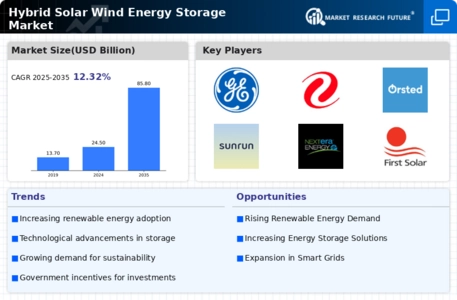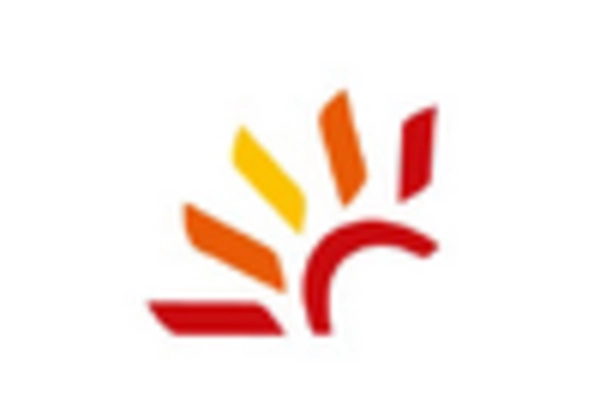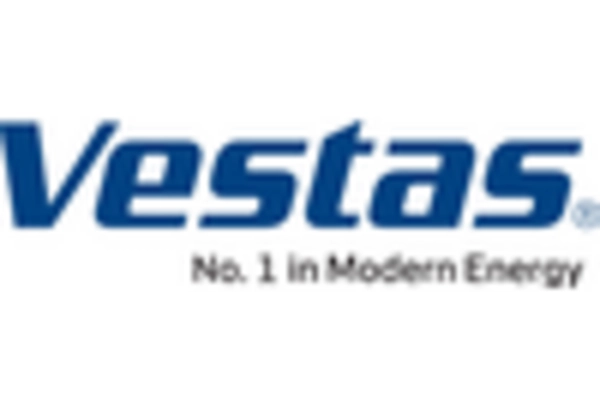The Hybrid Solar Wind Energy Storage Market is currently characterized by a dynamic competitive landscape, driven by the increasing demand for renewable energy solutions and the need for energy storage systems that can efficiently integrate solar and wind resources. Key players such as Siemens Gamesa Renewable Energy (ES), General Electric (US), and Vestas Wind Systems (DK) are strategically positioning themselves through innovation and partnerships, which collectively shape the competitive environment. Siemens Gamesa, for instance, focuses on enhancing its technological capabilities in hybrid systems, while General Electric emphasizes its commitment to sustainability and digital transformation in energy solutions. Vestas, on the other hand, is expanding its global footprint, particularly in emerging markets, thereby intensifying competition in the sector.
The business tactics employed by these companies include localizing manufacturing and optimizing supply chains to enhance operational efficiency. The market structure appears moderately fragmented, with several players vying for market share. However, the collective influence of major companies like NextEra Energy (US) and Enel Green Power (IT) is notable, as they leverage their extensive resources and expertise to drive innovation and establish a competitive edge.
In August 2025, Siemens Gamesa Renewable Energy (ES) announced a partnership with a leading battery technology firm to develop advanced energy storage solutions tailored for hybrid solar-wind systems. This strategic move is likely to enhance their product offerings and position them as a leader in the hybrid energy sector, addressing the growing need for reliable energy storage.
In September 2025, General Electric (US) unveiled a new digital platform aimed at optimizing the performance of hybrid energy systems. This initiative underscores the company's focus on integrating artificial intelligence and data analytics into its operations, potentially improving efficiency and reducing operational costs for customers.
In July 2025, Vestas Wind Systems (DK) launched a new initiative to expand its hybrid energy solutions in Asia-Pacific, particularly targeting countries with high renewable energy potential. This expansion strategy not only diversifies their market presence but also aligns with global sustainability goals, positioning Vestas favorably in a rapidly evolving market.
As of October 2025, current competitive trends in the Hybrid Solar Wind Energy Storage Market are increasingly defined by digitalization, sustainability, and the integration of artificial intelligence. Strategic alliances among key players are shaping the landscape, fostering innovation and enhancing operational capabilities. Looking ahead, competitive differentiation is expected to evolve, with a shift from price-based competition to a focus on technological advancements, innovation, and supply chain reliability, thereby ensuring long-term sustainability and growth in the sector.

















Leave a Comment